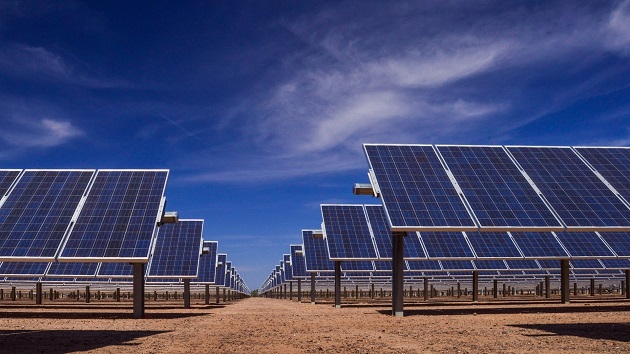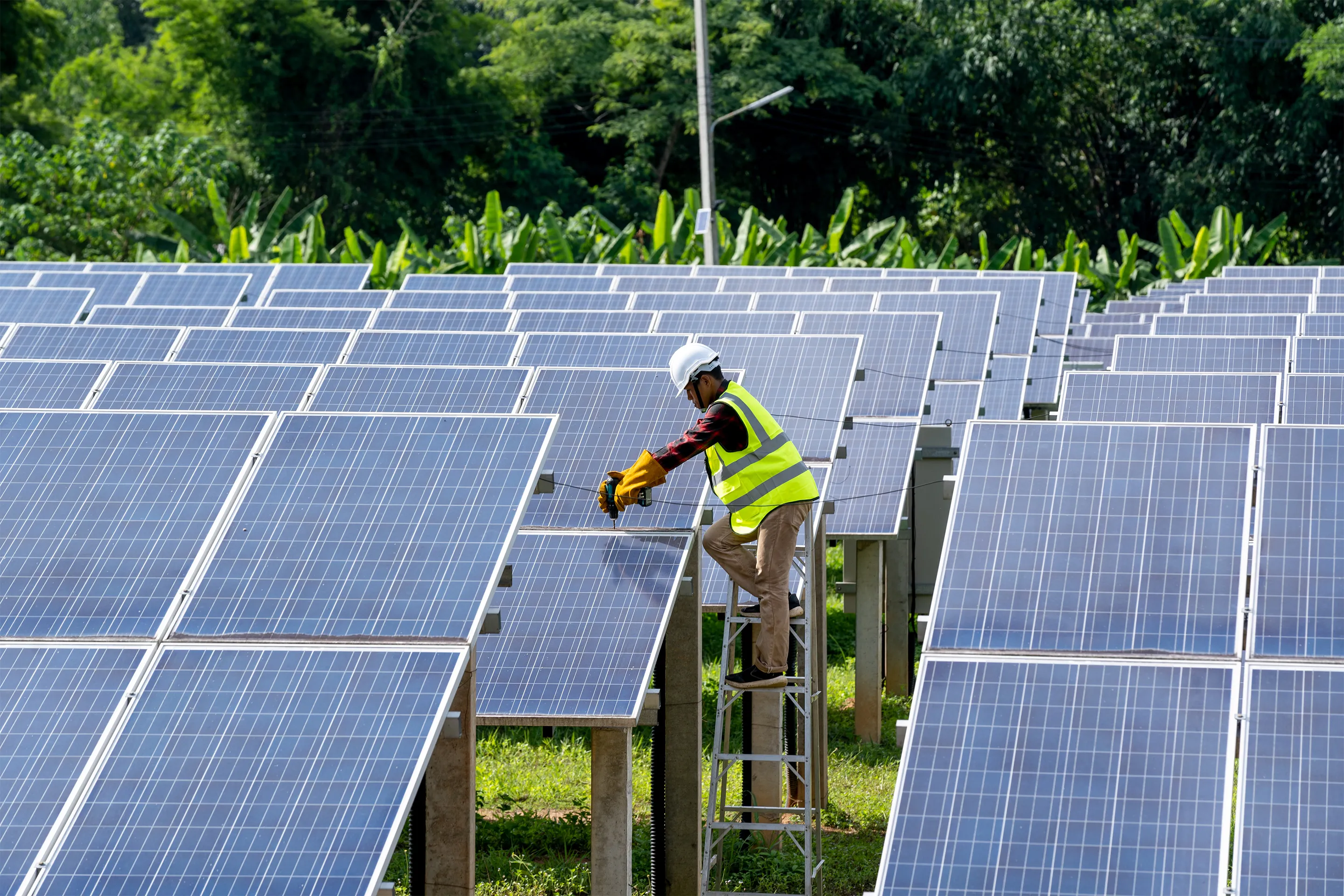Virginia Residential Solar Installers: Lumina Solar Focuses On Providing Advanced Photovoltaic Solutions For Homes And Services
History and Founding
Have you ever questioned how a photovoltaic panel business springs from a mere trigger of inspiration into a powerhouse of renewable resource? It typically begins with a vision-- one sustained by a mix of innovation, determination, and a pinch of serendipity. The journey of lots of solar companies mirrors the development of the innovation itself: from bulky, inefficient panels to streamlined, high-efficiency marvels harnessing the sun's bounty.
The Early Days
In the late 20th century, when solar power was still a niche concept, leaders planted seeds for what would become a global motion. Envision a little workshop filled with curious engineers, relentlessly try out photovoltaic cells. Their enthusiasm was palpable, typically driven by a desire to fight climate change and minimize reliance on nonrenewable fuel sources.
One such anecdote is about a creator who, inspired by an outdoor camping journey, realized that even in remote areas, the sun could power important devices. This basic observation triggered a business's mission to democratize access to clean energy.
Establishing Concepts

- Innovation: Continuously pushing the borders of solar technology to improve effectiveness and durability.
- Sustainability: Dedicating to environment-friendly manufacturing and minimizing carbon footprints.
- Ease of access: Making renewable energy solutions inexpensive and practical for everyday users.
Turning points in Development
| Year | Secret Event |
|---|---|
| 1985 | Company founded in a small garage, concentrating on research and development. |
| 1995 | First business photovoltaic panel item released, acquiring regional attention. |
| 2005 | Expanded to worldwide markets, welcoming worldwide renewable resource objectives. |
| 2015 | Introduced advanced photovoltaic panel technology with boosted energy conversion. |
Isn't it fascinating how these incremental steps, frequently neglected, form the energy landscape today? The solar panel company story is not simply about innovation; it's about an unrelenting quest for a brighter, cleaner future.

Innovations in Solar Panel Technologies
Ever noticed how some photovoltaic panels gleam brighter and last longer? It's not magic; it's the science of photovoltaic effectiveness. Modern solar panel business invest greatly in technologies like bifacial cells, which record sunlight from both sides, enhancing energy harvest without expanding roofing system space. Have you ever questioned why some panels carry out much better on cloudy days? That's due to advances in thin-film solar technology, which thrives under diffused light conditions.
Product Variations Customized to Unique Needs
One size never ever fits all. Photovoltaic panel service providers now offer:
- Monocrystalline panels for maximum effectiveness and sleek aesthetics, ideal for space-constrained roofs.
- Polycrystalline panels, which provide a cost-efficient option without compromising too much output.
- Building-integrated photovoltaics (BIPV), merging solar tech seamlessly into architectural elements like windows and facades.
Picking the ideal item isn't practically in advance expense; it's about matching your environment, energy objectives, and long-lasting savings. For instance, homes shaded by trees need panels that master low-light scenarios, something numerous overlook until energy expenses climb up unexpectedly.
Technical Tips for Optimal Selection
- Examine the temperature level coefficient-- lower values imply panels lose less performance on hot days.
- Look for panels with boosted anti-reflective coverings to optimize light absorption.
- Think about the panel's warranty not just for problems, but for guaranteed power output over years.
- Do not ignore the value of the inverter technology combined with the panels; it can make or break your system's efficiency.
Beyond Panels: Emerging Patterns
Think of photovoltaic panels that adjust their angle immediately to go after the sun-- tracking systems are ending up being more accessible, increasing yield significantly. Or solar tiles that blend undetectably into your roofline, changing your home into a silent, self-dependent power generator. These developments are improving what a solar panel business uses-- not simply items, but integrated energy options.
Market Existence and Global Operations
Ever question why some photovoltaic panel companies appear to grow up in every corner of the globe while others hardly make a ripple? The difference lies not simply in innovation however in mastering the art of navigating diverse markets. Expanding internationally resembles planting seeds in various environments-- you should comprehend each environment's unique conditions to thrive.
Take, for example, the detailed dance of logistics and supply chain management. Delivering panels midway throughout the world isn't almost distance; it has to do with timing, custom-mades, tariffs, and adapting to local demand fluctuations. A business with robust worldwide operations anticipates these variables, making sure panels show up on schedule without pumping up costs. This insight is no small task and frequently separates market leaders from fans.
Key Techniques for Expanding Market Presence
- Localized production: Developing production hubs near target audience lowers shipping delays and import intricacies.
- Strategic partnerships: Collaborating with regional companies speeds up market penetration and constructs trust.
- Adaptive product style: Customizing photovoltaic panel tech to weather, sun intensity, and infrastructure nuances improves efficiency and acceptance.
What about the human aspect? Photovoltaic panel companies operating internationally must fix up cultural differences and regulative nuances without losing sight of their core objective. What works in a sun-drenched desert might falter in a damp coastal region. In some cases, the most innovative service is merely listening-- taking in local insights to refine technology and approach.
Specialists frequently recommend a phased rollout instead of a shotgun expansion. Why risk overextension when measured development constructs sustainable momentum? Scaling sensibly suggests balancing aspiration with operational durability - Commercial Solar Panels Virginia. In the race for sustainable energy dominance, perseverance can be as important as speed.
Ecological Impact and Sustainability Practices
When photovoltaic panels initially emerged, many presumed they carried no environmental luggage. Nevertheless, the reality is more nuanced. The production of solar batteries involves uncommon earth metals and energy-intensive processes, which can leave a large carbon footprint before the panels even reach rooftops. Yet, the real environmental expense depends greatly on the sustainability practices used by the photovoltaic panel business throughout the lifecycle of their products.
How frequently do we stop briefly to consider what takes place to solar panels at the end of their useful life? Unlike batteries or website electronics, photovoltaic panels can last 25-30 years, but disposal and recycling paths stay underdeveloped in many regions. A company devoted to decreasing environmental damage will have a robust prepare for recycling photovoltaic materials, restoring important silicon, glass, and metals to prevent landfill accumulation.
Key Sustainability Methods
- Making use of low-impact manufacturing techniques that decrease water and energy usage.
- Carrying out closed-loop systems to recycle production waste back into new panels.
- Engaging in transparent supply chain audits to ensure ethical sourcing of raw products.
- Designing panels for simpler disassembly to help future recycling efforts.
It's worth noting that some solar business have actually originated ingenious techniques, such as integrating naturally degradable elements or utilizing less harmful chemicals during fabrication. This not just reduces environmental strain but likewise sets a precedent for the industry. The concern stays: can the solar industry genuinely pivot towards a circular economy model without sacrificing effectiveness or cost?
Expert Tips for Assessing Sustainability
- Inquire about the company's dedication to carbon-neutral production and whether they offset emissions.
- Investigate if they partner with certified recycling centers dedicated to photovoltaic panel waste.
- Look for openness reports detailing environmental impacts and sustainability objectives.
- Think about the longevity and guarantee of panels as an indirect procedure of resource performance.
In the end, choosing solar power must suggest more than simply slashing electrical energy bills; it has to do with nurturing a future where energy is harvested responsibly and waste is thoughtfully managed. Photovoltaic panel companies that accept this philosophy not just illuminate homes however likewise cast a brighter light on sustainable innovation.